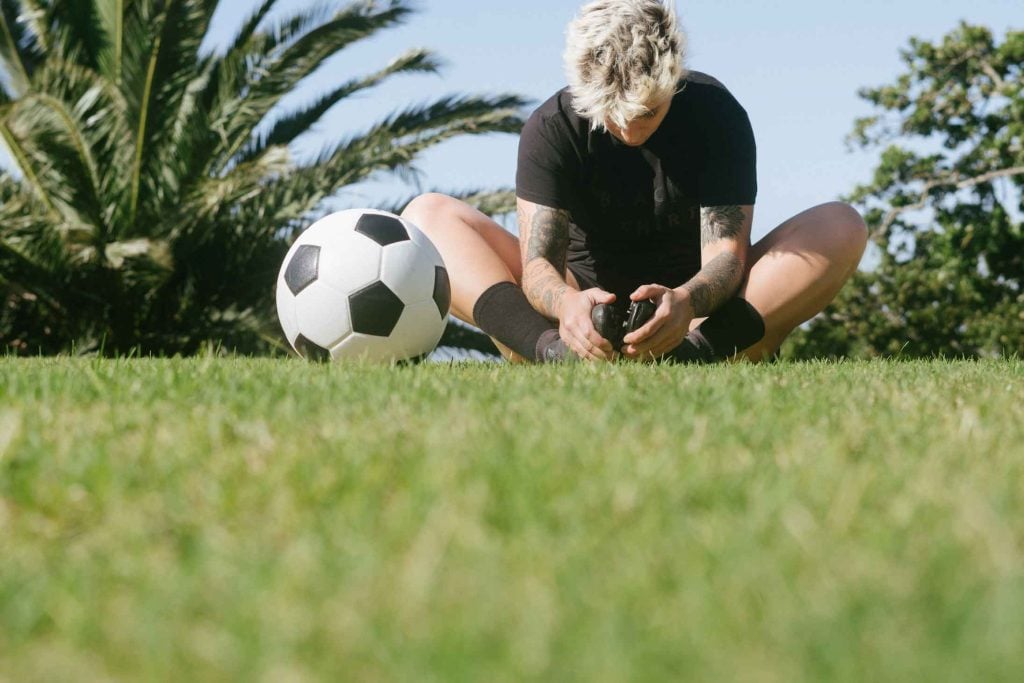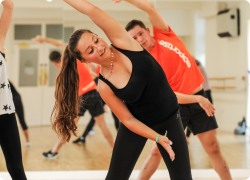Even as restrictions are slowly lifted across the different continents after the world has been struck by the coronavirus, we are still encouraged to limit outings as much as possible. This helps reduce the risk of a second wave of the virus.
Nonetheless, as the school year comes to a close, and after several months of home-schooling, many young athletes who were looking forward to summer programs have been faced with a painful reality; many summer athletic programs have been canceled or postponed, or at best, limited (we do still have a few soccer summer camps options available for this year).

However, athletes and family members of young athletes who are reading this article should know that they are not alone, and at Ertheo, we want to be here to support you (please also see our full guide about how a lockdown influences in young athletes).
Why is it important for young athletes to continue training, even if the methods are untraditional? And secondly, how can young athletes stay on top of their game while respecting social distance?
In this article, we will give you important information on why it is critical for athletes to continue training while they are at home and maintaining social distance, for the good of their mental health, as well as for the good of their physical health. We will also provide you with concrete ways to stay mentally and physically healthy and in-shape while at home.
A Note About Mental Health
When we think of health, we usually think of components directly related to our physical health: our diet, any conditions or illnesses we have, our immune system, and, of course, our athletic condition.
However, the UN’s World Health Organization (WHO) has a clear but much more comprehensive view of health.
“Health is a state of complete physical, mental, and social wellbeing and not merely the absence of disease or infirmity.”
In other words, health involves the body, the mind, and our social environment.
Mental health is an increasingly important subject that needs to be addressed in young people. While a focus on mental health at all stages is increasingly becoming part of schools’, families’, and institutions’ priorities, we still have a long way to go.
The consequences of not addressing mental health in adolescence can extend into adulthood, which impairs long-term physical and psychological health and limits the opportunity for people to live fulfilling lives as adults.
For Athletes, Physical Health is Directly Connected to Mental Health
Most people experienced abrupt changes in their everyday lives with the spread of the coronavirus pandemic. Young people continued their schooling at home, they had limited to no visits with friends, and their athletic activities were canceled.
These changes have a significant impact on the three mean aspects of the health of young people: their physical health, mental health, and social wellbeing.

Young people’s physical health, while protected from COVID-19 and other infections due to stay-at-home measures, is at risk of a more sedentary lifestyle than pre-COVID-19 times. Sedentarism, or the lack of physical activity over long periods, can increase the risk of heart disease, type 2 diabetes, problems in bone density, osteoporosis, and unhealthy weight gain.
For young athletes, their physical health, mental health, and social health are all intimately connected. According to the World Health Organization, physical activity is intimately connected to academic and cognitive performance, and it is associated with increased self-esteem, and muscular, skeletal, and heart health. It is also associated with reduces anxiety and depression among adolescents, and it has benefits for increased social interaction and community engagement.
In short, if athletes, who are accustomed to staying active and socializing with team members, no longer engage in their sport of choice, the consequences for their health could be deep and long-lasting.
For these reasons, we have developed a list of ideas for how young athletes can stay active and engaged while they are at home.
Note that the section below is written for young athletes. If you aren’t the athlete, feel free to print out these ideas or send them to the young athlete, you know, to keep them inspired.
8 Ways for Young Athletes to Stay Active and Engaged at Home
- Engage with Role Models
Young athletes likely follow some of their favorite role-models on social media. Lately, sports stars and celebrities have been posting a lot more on social media as they try to stay busy while on lock-down, and sports teams are just starting to get back into action. For example, Venus Williams and Victoria Azarenka did a live IG workout in April for #tennistuesday.
How exciting is it that we can use social media to follow athletes’ training sessions live and train along with them? Young athletes can keep an eye on their role models’ social media pages and hop into live training sessions.
- Live Streams with the Team
One of the things that many young athletes will miss while in quarantine is training alongside their teammates and friends. Thanks to video conference technology, like Xoom and Google Classroom, you can all engage in live training sessions together from afar. You can make it a regular weekly, bi-weekly, or even daily session where you can all stay on your game, keep in shape, and hang out together like you used to.
It doesn’t all have to be about business. Team members can take the relive some of your favorite team rituals and game moments to keep the social bonding strong.
- Build a Training Schedule
When you are doing schoolwork at home, resting at home, eating at home, and training at home, time can become a blur. It can be easy to lose track of time and feel unsatisfied by the end of the day.
One of the general recommendations for students who are homeschooling is keeping a schedule. Schedules make sure you are spending the allotted amount of time on each subject while still leaving time for eating, rest, and recreation, while also giving structure to your days that can feel like they blur together.
In the same way, building a weekly or monthly training schedule can help you make sure you are staying in shape and working toward your strength and agility goals. Remember – when all this is over, you will be back on the field or court, and you want to be prepared.
- Set Training Goals
As an athlete, you know there is always room for improvement. Your coaches and trainers help you to identify how you can become more precise, more agile, stronger, and more strategic. In some ways, being at home for a long period is the perfect time to focus solely on improving your skill.
Creating weekly or monthly goals can help you stay focused on improving those aspects of your physique, technique, and strength.
If you’ve created a training schedule, keep your training goals aligned and, ideally, you’ll have both in a visible place.
- Keep in Touch with Your Coach
Coaches keep the team moving in the right direction when they know the strengths of each team member and the areas in which they need to improve. For young athletes, they often become a leader that gives them orientation and tells them what they need to hear.
If you are interested in keeping in touch with your coach, talk to your parents to see if it is okay with them. Then reach out to your coach and ask if they would be willing to continue working with you. If you’ve created a training schedule and training goals, they’ll know you’re committed to the sport and the team.
- Create an Accountability Group
It isn’t always possible to virtually train with your team members, but you can still keep each other accountable. There are some great platforms you can use to follow each others’ workouts, cheer each other on, compete, and give each other tips.
Some Apps are more serious and programmed to focus on your fitness goals, while other are more fun and give a “gamier” feel to training. One App, Charity Miles, is a way to stay in shape while supporting charity!
Some great Apps include:
- RunKeeper
- Strava
- J&J 7-minute workout
- JEFIT
- Zombies, Run!
- Charity Miles
- Try Out New Sports and Games

Have you always wanted to learn how to play softball or yoga, but you were simply too busy with your regular training activities?
Why not use the time to try something brand new? Switch your regular training once or twice a week to learn a new sport or spend time with your younger siblings playing a new game. It will keep you active and
Remember that now is not the time to go to parks and play with friends and other athletes, but you can be creative and try new sports and games that will keep you active with your family either at home or in nature.
- Take Nature Hikes
One way to stay in shape while keeping social distance is to get out into nature. Strap on your hiking boots or load up your bike and explore areas of your neighborhood or state that you aren’t familiar with. The fresh air and scenery can give you a break from your home, and it will also add some versatility to your physical activity.
Main Takeaways
Lockdown and quarantine is a difficult time for everyone. Still, it can be especially difficult for young athletes whose physical, mental, and social wellbeing has centered around their sport of choice.
It goes without saying that athletes and parents alike can’t wait for this to pass so they can get back on the field or court, but in the meantime, we all need to be patient and cautious. We can do that while still staying game ready by finding ways to stay motivated and active at home.
